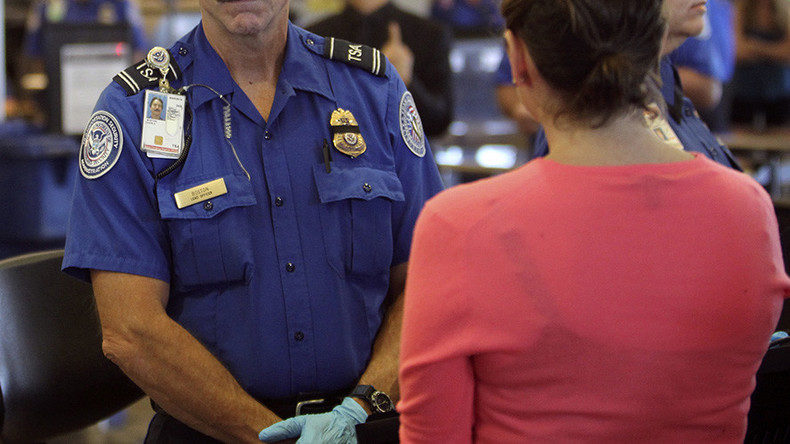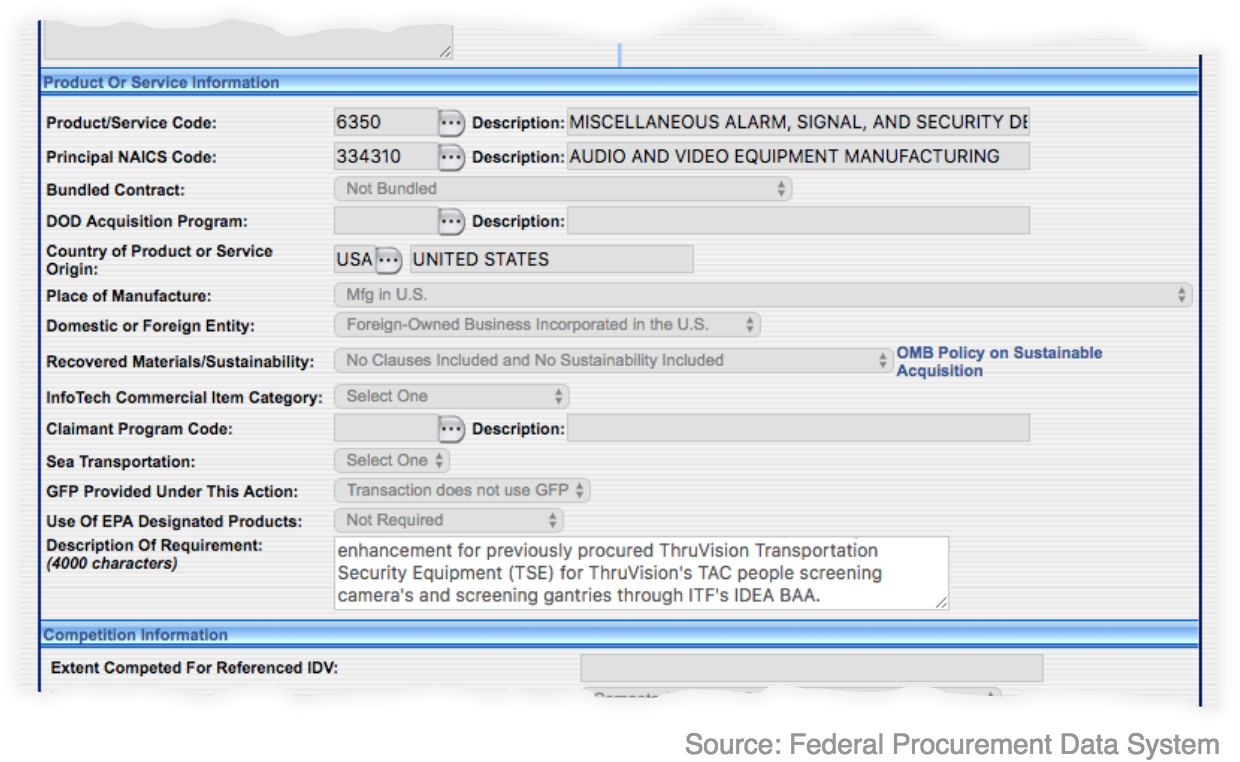Officials at the Transportation Security Administration (TSA), the Department of Homeland Security division that keeps the nation's airports safe, have discovered that the technology the equipment uses to render images poses "privacy risks," according to a recent federal contracting document reviewed by Quartz. Its manufacturer is now working on "enhanced privacy software" to fix the issue, according to the document, though it doesn't provide further details.
The screening system is an essential part of TSA's "Future Lane Experience," or "FLEx," an initiative designed to speed up screening at airports.
The name of the equipment vendor is redacted in the document, but is identified in a separate government database as ThruVision Inc. of Ashburn, Virginia. The system the TSA purchased, called "TAC," is described by ThruVision as a "people-screening camera that sees any type of item-including metal, plastic, ceramic, gel, liquid, powder and paper-hidden in peoples' clothing at distances of 3 to 10m," or about 10 to 32 feet.
TSA and ThruVision did not respond to requests for comment.
Genitalia, breasts, and buttocks
The TSA has had privacy issues with passenger screening in the past. Between 2007 and 2013, it used scanners the American Civil Liberties Union (ACLU) said acted as a "virtual strip search" that provided TSA employees with pictures of passengers' genitalia, breasts, and buttocks. The group, along with the Electronic Privacy Information Center (EPIC), sued the TSA over their use.
At the time, president Obama said the scanners were needed to help prevent terrorist attacks. However, the devices were removed after public outcry and replaced with less-intrusive machines.
The "privacy risks" with the new equipment are likely very similar, experts say. The problem is associated with the "Graphical User Interface", which lacks adequate "privacy filters," according to the TSA contract. That tells Jay Stanley, an ACLU policy analyst, that the issue the TSA has identified is related to visual, not data, privacy.
"The higher the resolution of the screen, the worse it is," Stanley tells Quartz. "It could be genitalia, it could be a colostomy bag."
The system has so far cost $662,840, with the software patch costing $250,000, for a total of $912,840, per the US government's Federal Procurement Data System. ThruVision says on its website the device "operates at 250GHz for optimal clothing penetration and stand-off distance."
The TSA appears to have high stakes riding on the equipment, which it calls in the contract a "key component" in its efforts to speed up screening. Without the fixes, the agency can't test the equipment in the field. That, in turn, could hamper its ability to deploy "screening methodologies that are less invasive, more efficient and effective," it says.
Technologist and privacy expert Bruce Schneier, who has studied airport security extensively, said the patch wouldn't necessarily make the problems go away.
"There are lots of definitions of 'fix,'" Schneier tells Quartz. "Some work, some don't."
A preemptive solution
The TSA's new screening program fits within a much larger framework of expediting the overall process while making it more efficient and more effective, says aviation lawyer Mark Dombroff, whose practice centers on airport and aircraft security and regulatory and enforcement matters.
He says privacy is an inevitable concern in the TSA's quest to streamline passenger screening, since the technology has become so effective. The TSA is wise to address these problems preemptively, Dombroff adds.
"Now, having said all that, it doesn't mean they still won't get sued," says Dombroff. "It's the nature of aviation today."
But Stanley, from the ACLU, says the TSA must be more forthright about its plans. Although he closely tracks these issues, this is the first mention he's heard of the FLEx program.
Read the full text of the TSA's FLEx document here:
TSA TAC J&A redacted by on Scribd






Reader Comments
R.C.
You mean the department that has been harassing people for two decades and caught zero terrorists.
Many still have to fly for various reasons; glad I don't!
As an aside, surely those unwilling or unable to go fly private, would just buy themselves a 'suit' designed to 'body molding'.... to give the expected impression to the machine... right?